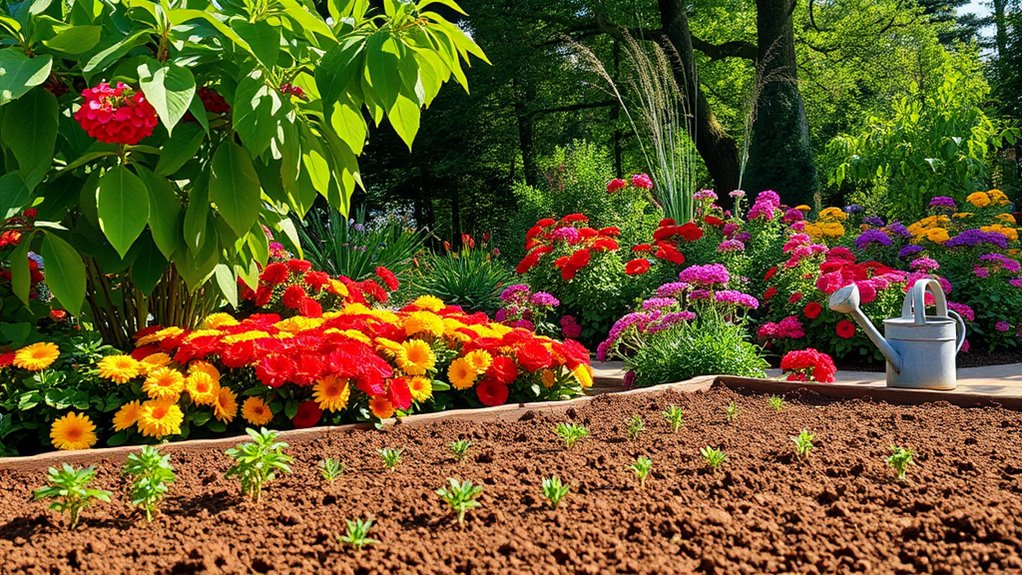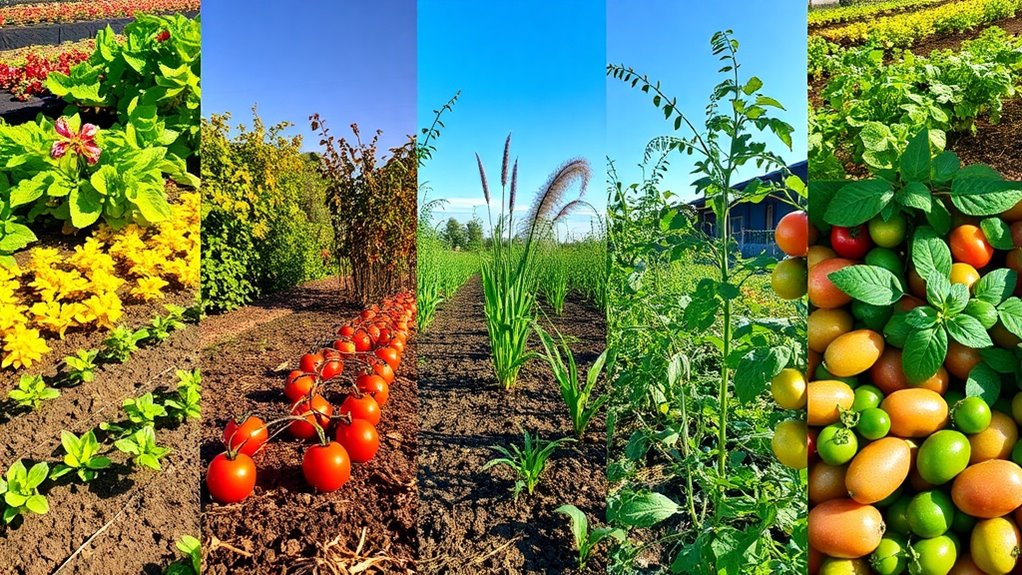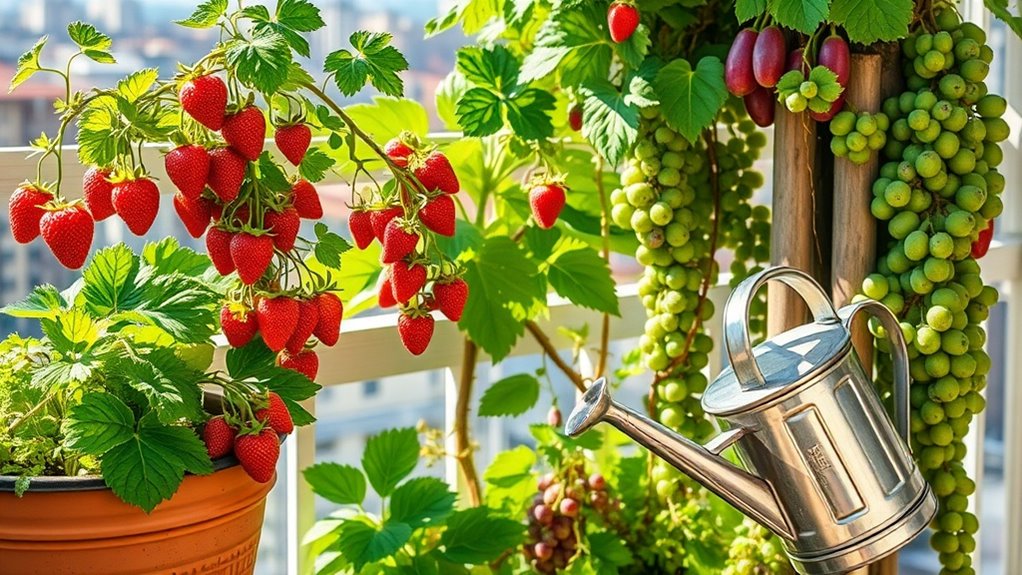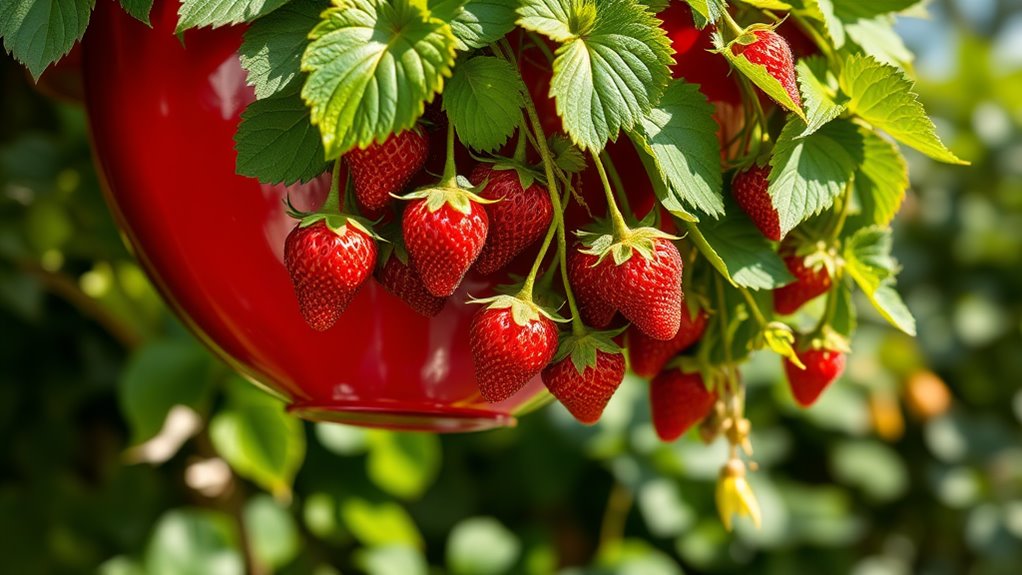A Foolproof Guide to Growing the Right Plants by Season
Did you know that nearly 30% of home gardeners struggle with plant selection based on seasonal changes? It’s crucial to understand how your climate zone influences what you can grow effectively. By aligning your planting choices with the seasons, you can ensure vibrant growth and bountiful harvests. In this guide, you’ll discover the best plants for each season and how to care for them. Are you ready to transform your gardening experience?
Key Takeaways
- Identify your USDA Plant Hardiness Zone to select plants suited for your area’s climate and temperature ranges.
- Time your planting according to local frost dates and the length of the growing season for optimal results.
- Opt for cool-season crops like peas and lettuce in spring, while choosing warm-season varieties like tomatoes and peppers in summer.
- Prepare for fall planting by sowing cold-hardy vegetables like kale and carrots that can withstand frost and improve flavor.
- Maintain garden health by adjusting watering, using seasonal fertilizers, and practicing crop rotation to enhance sustainability.
Understanding Your Climate Zone
Understanding your climate zone is crucial for successful gardening. It determines which plants thrive and when to plant them.
Use the USDA Plant Hardiness Zone Map to identify your zone and its temperature ranges.
Knowing this helps you select plants suited for your area’s conditions.
Seasonal garden tips include timing your planting based on frost dates and understanding your zone’s growing season.
For instance, if you’re in a cooler zone, opt for cold-tolerant varieties. Additionally, understanding your zone’s growing season length can help you plan for both spring and fall planting effectively.
Spring Planting: Best Choices for Vibrant Growth
As the chill of winter fades, spring presents an ideal opportunity to rejuvenate your garden with vibrant plants that thrive in warmer temperatures.
Consider planting pansies, which offer colorful blooms and can withstand light frosts. Snapdragons add height and texture, creating visual interest.
For vegetables, sow peas and lettuce early for a bountiful harvest. Herbs like basil and cilantro flourish in spring, enhancing your culinary creations. Optimal spring crops are essential for maximizing your garden’s potential.
Ensure you prepare your soil well, incorporating compost for nutrients. Water regularly and provide adequate sunlight to promote healthy growth.
With these selections, your garden will burst with color and vitality throughout the season.
Summer Care: Heat-Resistant Plants to Thrive
As summer heat intensifies, choosing the right heat-resistant plants can make all the difference in your garden’s success.
You’ll need to consider not only the best varieties but also effective watering techniques and the specific sunlight and soil requirements for each type. Additionally, incorporating drought-tolerant crops can help ensure your garden remains productive even during dry spells.
Best Heat-Resistant Varieties
Summer can be brutal for many plants, but choosing the right heat-resistant varieties can make all the difference in your garden’s success.
Consider planting heat-tolerant options like zinnias, lantanas, and marigolds for vibrant color that thrives in the sun.
For vegetables, look to varieties like okra, sweet potatoes, and eggplants, which flourish in high temperatures.
Herbs such as basil and rosemary also handle the heat well, adding flavor to your meals.
By selecting these resilient plants, you can create a flourishing garden that withstands summer’s harsh conditions while minimizing stress and maintenance.
Happy gardening!
Watering Techniques for Summer
How can you ensure your heat-resistant plants stay hydrated during the sweltering summer months?
Start by watering early in the morning or late in the evening to minimize evaporation.
Use a soaker hose or drip irrigation for efficient water delivery directly to the roots.
Aim for deep, infrequent watering, allowing the soil to dry out slightly between sessions; this encourages deep root growth.
Mulch around your plants to retain moisture and regulate soil temperature.
Monitor humidity and adjust your watering schedule accordingly, especially during heatwaves.
Finally, always check soil moisture before watering; over-watering can be just as harmful.
Sunlight and Soil Needs
To help your heat-resistant plants thrive during the summer, understanding their sunlight and soil needs is vital.
Most of these plants prefer full sun, requiring at least six hours of direct sunlight daily.
Choose a well-draining soil mix, enriched with organic matter, to retain moisture while preventing root rot.
Test the soil’s pH; many heat-resistant varieties flourish in slightly acidic to neutral conditions (around 6.0 to 7.0).
Incorporate mulch to regulate soil temperature and moisture levels.
Regularly monitor your plants for signs of stress, adjusting light exposure and watering as needed to ensure they stay healthy throughout the scorching months.
Fall Harvest: Preparing for Cooler Weather
As the days grow shorter and temperatures begin to drop, what steps can you take to ensure a successful fall harvest?
Start by focusing on these essential tasks:
- Harvest at Peak Ripeness: Pick fruits and vegetables when they’re fully mature for the best flavor.
- Protect from Frost: Use row covers or mulch to shield your plants from unexpected frosts.
- Clean Up Debris: Remove dead plants and fallen leaves to prevent pests and diseases.
- Plan for Storage: Prepare a cool, dry space for storing your harvest, ensuring it lasts through winter.
Additionally, consider planting seasonal vegetables such as kale and carrots, which thrive in cooler weather.
With these steps, you’ll maximize your fall bounty!
Winter Gardening: Plants That Flourish in Cold
While the fall harvest wraps up, winter gardening offers a unique opportunity to cultivate plants that thrive in colder conditions.
Consider growing hardy varieties like kale, spinach, and winter carrots. These plants not only withstand frost but often improve in flavor after exposure to cold.
When planting, ensure your soil is well-drained and rich in organic matter. Use mulch to protect roots from freezing temperatures. Additionally, consider using row covers or cold frames to provide extra warmth and protection. Seasonal gardening tips are invaluable for maximizing your winter harvest.
With the right care, you can enjoy fresh, nutritious produce even in the depths of winter. Get started on your winter garden today!
Seasonal Rotations: Maximizing Your Garden Space
To maximize your garden space, implementing seasonal planting strategies is essential.
By rotating your crops, you not only enhance soil health but also improve yield and reduce pest issues.
Understanding the benefits of these practices will help you create a more productive and sustainable garden throughout the year. Additionally, choosing ideal crops for planting during each season can significantly boost your harvest potential.
Seasonal Planting Strategies
When you plan your garden with seasonal rotations in mind, you can maximize your available space and harvest a variety of crops throughout the year.
To implement effective seasonal planting strategies, consider these steps:
- Choose Fast-Growing Crops: Opt for quick-maturing plants like radishes and lettuce to fill gaps.
- Follow the Seasons: Plant cool-season crops in early spring and late fall.
- Stagger Planting: Space out your sowing to ensure continuous harvests.
- Utilize Vertical Space: Incorporate trellises for climbing plants to make the most of your garden layout.
Crop Rotation Benefits
Crop rotation offers numerous benefits that can significantly enhance your garden’s productivity and health.
By alternating crops each season, you’ll naturally reduce soil nutrient depletion and promote a balanced ecosystem.
Different plants require varying nutrients, so rotating helps replenish the soil.
It also disrupts pest cycles, minimizing infestations and diseases that target specific crops.
Additionally, crop rotation improves soil structure and reduces erosion, leading to better water retention.
Lastly, this method encourages biodiversity, fostering a resilient garden.
Implementing a thoughtful rotation plan not only maximizes your garden space but also builds a sustainable environment for future growth.
Tips for Year-Round Plant Care and Maintenance
Here are four essential tips:
- Watering: Adjust your watering schedule based on seasonal needs; plants require more water in warmer months.
- Fertilizing: Use the right fertilizer according to the season; growth phases vary.
- Pruning: Regularly prune dead or unhealthy branches to encourage new growth and improve air circulation.
- Pest Control: Monitor for pests year-round; early detection prevents infestations.
Additionally, be mindful of seasonal watering tips to optimize water usage while keeping your plants healthy.





